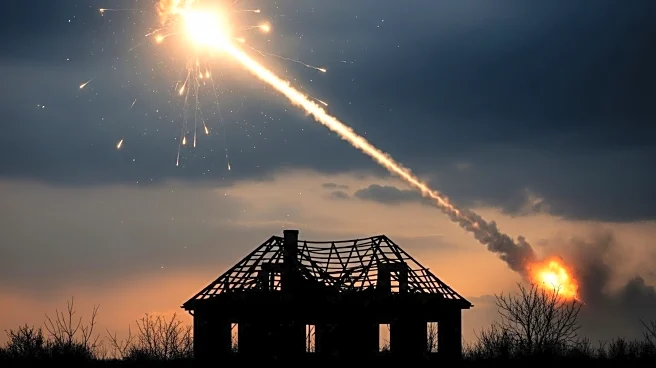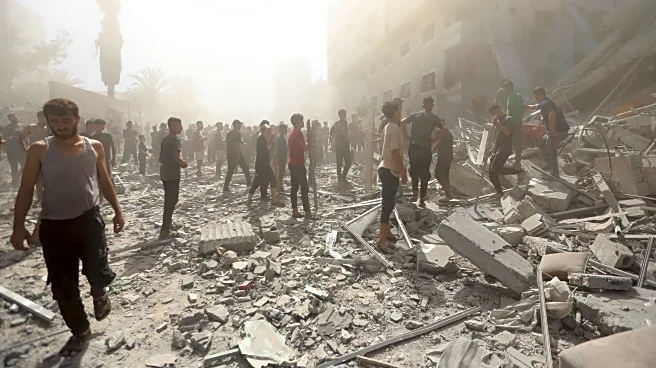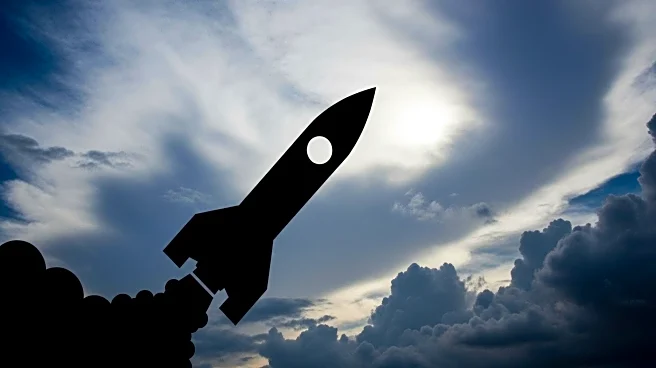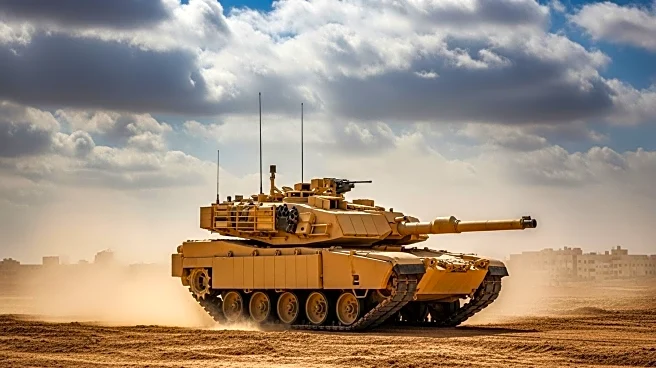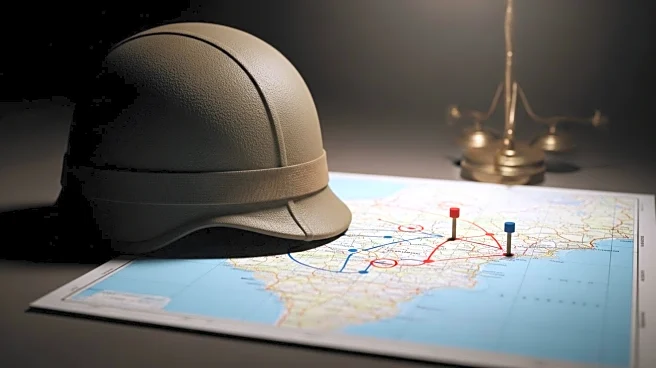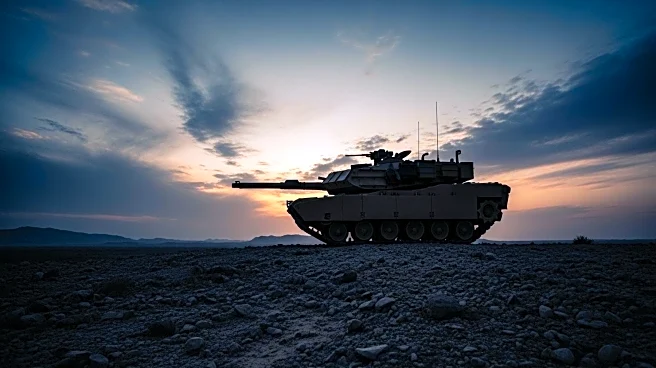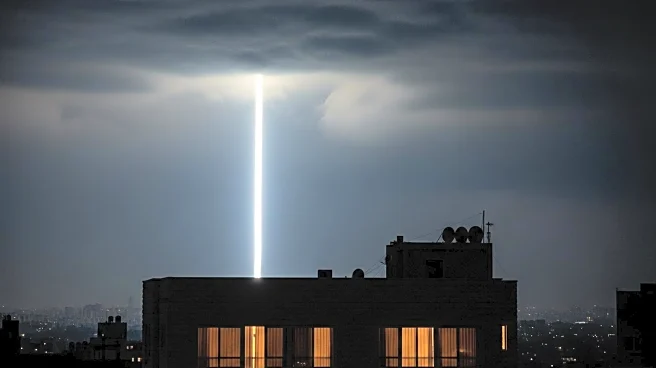What's Happening?
The Israeli Defense Forces (IDF) have announced the temporary opening of a second evacuation route for residents of Gaza City. This decision comes in response to severe traffic congestion along the main coastal road, al-Rashid Road, which has hindered movement and raised safety concerns. The new corridor, running along Salah al-Din Street, will be open for 48 hours, allowing residents to move south without being screened at military checkpoints. This initiative is part of ongoing efforts by Israeli ground forces to facilitate civilian evacuations amid military operations in Gaza City. The IDF has urged residents to use only the designated safe passages marked on official maps. The move aims to alleviate the difficulties faced by families in finding transportation and to address the humanitarian concerns arising from the conflict.
Why It's Important?
The opening of a new evacuation route is significant as it addresses the immediate humanitarian needs of civilians in Gaza City, who are caught in the crossfire of ongoing military operations. By providing an alternative route, the IDF aims to ensure safer and more efficient evacuations, potentially reducing civilian casualties and alleviating some of the humanitarian pressures. This development also highlights the complex dynamics of the conflict, where military strategies must balance operational objectives with humanitarian considerations. The situation underscores the challenges faced by civilians in conflict zones and the importance of international humanitarian law in guiding military conduct.
What's Next?
The IDF's decision to open a new evacuation route may lead to increased scrutiny from international observers and humanitarian organizations, who are closely monitoring the situation in Gaza. The effectiveness of this measure in facilitating safe evacuations will likely influence future military and humanitarian strategies in the region. Additionally, the IDF's accusations against Hamas for spreading misinformation may prompt further investigations into the use of propaganda in the conflict. The humanitarian situation in Gaza remains precarious, and continued efforts will be necessary to ensure the safety and well-being of civilians.


